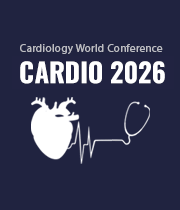Title : Ultrasound guided axillary vein puncture versus cephalic vein cutdown as venous access approach for implantation of CIED (Cardiac Implantable Electronic Devices)
Abstract:
CIEDs are integral to managing cardiac conditions and different venous approaches have been used for their implantation. Ultrasound-Guided Axillary Vein Puncture (US-AVP) has emerged as new venous approach. This meta-analysis aims to systematically compare these approaches concerning procedural success and complication rates. The primary endpoint of this study was the success rate defined as the successful placement of the CIED. The secondary endpoints of this study included time to venous access, fluoroscopy time and any peri and post procedure-related complications. Statistical analysis was performed using RevMan (Cochrane’s Review Manager). The pooled results show that the success through axillary venous access was significantly higher (RR 1.33; 95% CI 1.09, 1.62) when compared to patients who underwent venous access through cephalic vein (Figure). For time taken to venous access the analysis showed reduced time taken for US-AVP (SMD -17.49 [95% CI: -36.37 to 1.40], p=0.07) although did not reach statistical significance, besides that it suggested that the effect of time on study group varies depending on the comparator. For fluoroscopy time overall results favoured axillary access with a pooled estimate of -2.30 [95% CI: -4.68, 0.07] (Z=1.90, P=0.06). Results showed that procedural complications were different with risk of pneumothorax, haemothorax, haematoma formation and rate of infection being more in the unexposed group. In conclusion it was evident that US-AVP is superior to conventional methods. This significantly improves vascular access, which is the leading challenge and reason for complications. Therefore, US-AVP for CIED implantation should be recommended for future practices.



